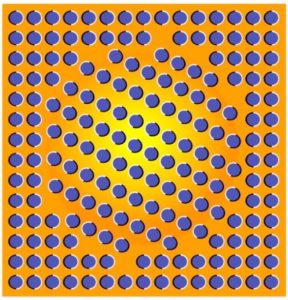Eyeballs
Ask the students questions. How many eyes do we have? Where are they on our body? What about other animals that have eyes? How are our eyes different?
Some animals have eyes on the side of their head like a rabbit or on top of their head like a spider. A spider has eight eyes! Some animals have big eyes like an owl or a cat and can see well at night. A hawk has telescopic vision and can zoom in and see a mouse way off in a field. A snake that is a viper has pits that allow it to see the body heat of other mammals glowing in the dark. Insects like a fly or bee have compound eyes made of lots little sections that help them see movement.
We cannot see anything if there is no light. Where does light come from? The sun makes white light that can be divided into the colors of the rainbow. What are some other things that make light? (Things that burn like wood or coal, lightening, fireflies, glow worms and some fish. Be prepared for flashlight)
Examine the eye model and discuss the parts of the eye.
a) Sclera = the whites of eyes (we can see blood vessels in the sclera).
b) Cornea = a clear window in the front.
c) Iris = colored part of the eye that lets light in.
d) Pupil = the dark hole in the middle
This is a good time to talk about eye safety and eye health, foods with vitamin A, the eye check up, things that can get in the eyes and sting or hurt the eyes, types of eye protection. I show the roll-up darkening glasses they give you after a check up, sunglasses and different types of protective glasses. Talk about instruments like the telescope, microscope, spectrascope and periscope. Seeing is believing they say. You might print out some illusions for them to examine.
Goals: Children will know that they have two eyes on the front of their face and that other animals may have eyes that are very different from theirs and in different locations like rabbits and mice that have eyes on the sides of their heads that allow them to see all around and help keep them from getting caught and eaten. Children will know that spiders have eight eyes and worms have no eyes. Children understand where light comes from and that it is necessary for us to see. The light of the sun is white light and can be divided into the colors of the rainbow. Children will be familiar with the parts of the eye.
Materials: Models of animals with have eyes different from ours. Pictures showing eyes of different animals Bug eyeglasses Prism in a sunny window to make a rainbow for the children to see. The rainbow will move in the room as the sun travels. Color paddles Rainbow coloring sheet Model of the eyeball and socket Eye chart and eye puzzle
Additional Information About Eyes Expressions you may have heard:
Look before you leap – – Seeing is believing – – -I’ve got eyes in the back of my head. – – What you see is what you get – – -For crying out loud— Can you believe your eyes?
I recently had my eyes examined and he gave me this picture if the inside of my eyeballs. 2019 Amazing what they can do!
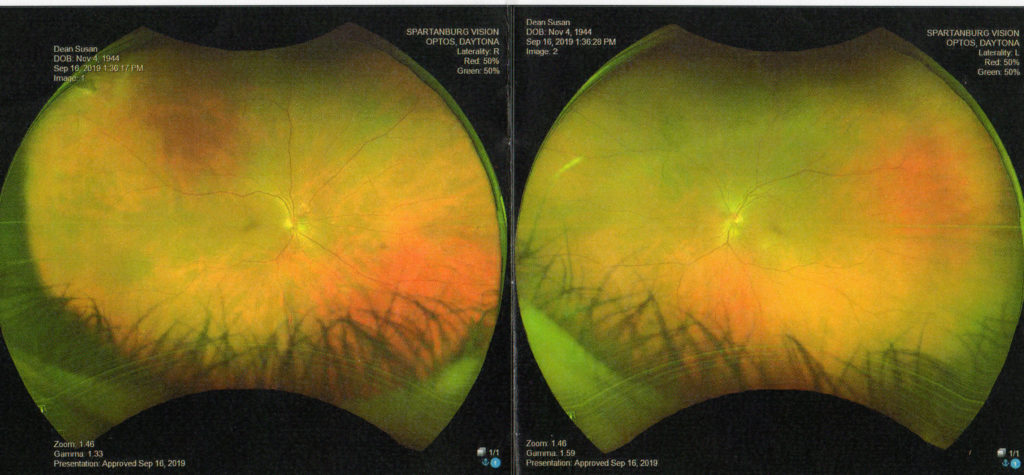
Inside my eyes
We could not see if there was no light. Light from the sun allows us to see. There are other things that create light such as burning wood, coal, oil, candles, matches, electricity, and batteries. Some animals make their own light such as some fish or fireflies. White light that we can see from the sun can split into 7 colors that we can see – the colors of the rainbow You can use a prism in a window to split light and make a rainbows on the wall.
Of all of the senses vision is often considered the most important! 4/5ths of everything we know reaches our brains through our eyes by electrical signals through the optic nerve to the brain. Eyes receive information from light rays that are either absorbed or reflected by the world around us. Objects that absorb all the light rays appear black. Objects that reflect all the light rays appear white. Colored objects reflect the light rays that they do not absorb.
The LENS of the eye focuses the light rays on the RETINA inside the eyeball forming an image upside down. The electrical signals are sent to your brain and translated right side up. The lens is protected in front by a fluid and behind the lens is a clear jellylike fluid. The muscles of the elastic lens can change its shape to bring things into focus near or far away. 20/20 is normal vision
The IRIS is the colored part of your eye surrounding the PUPIL. Your pupil is the dark circle in the middle of the eye that admits light rays. Muscles can make your pupil smaller or larger to let in the right amount of light. If it is dark, the pupil gets larger as the iris gets smaller to let in more light. If it is bright, the pupil gets smaller and the iris gets larger to let in less light.
The RETINA lines the inside of your EYEBAL and has special receptor cells called RODS and CONES. Rods are for black and white vision in dim light and for interpreting distance. The cones function in full light and enable you to see colors. Color blindness is inherited, rarely occurs in women, and is caused by a defect in the cones. Different cones are sensitive to different colors. There is a test one can take for color blindness.
A newborn baby is farsighted and cannot focus on things nearby for several months. As a person gets older the lens may lose its elasticity and one may not be able to focus on things clearly. This may be corrected with glasses.
Tiny muscles control the movements of the eyeballs. If there is an imbalance in the strength of the eye muscles you may appear cross-eyed or walleyed.
You need carrots and green leafy vegetables to get Vitamin A in order to have good night vision.
Looking nearby the lens thickens. Looking far away the lens gets thinner. The tough clear CORNEA protects the IRIS and LENS. Your brow, eyelid and lashes help to keep dirt and dust out. Eyelids help keep eyes clean and moist. Your lachrymal gland at the upper outside of the eye constantly supplies moisture to keep the cornea clean. The fluid empties into your tear duct into your nasal cavity.
EYEBALLS as big as ping-pong balls, sit in EYE SOCKETS of bone that help to protect them. Eyelid blinking is a voluntary and involuntary movement.
There are many inventions to assist us in seeing such as; the telescope, binoculars, microscope, spectra scope, and periscope. There are things to protect the eyes such as protective glasses, sunglasses, and goggles. Your vision is the strongest of the six senses that you have.
Sclera = the whites of the eyes.
Cornea = the clear tissue in front of the pupil and is like a window.
Iris = limits light.
Lens = directs light
The retina is smaller than a dime and changes light to impulses.
The ciliary muscle changes the shape of the lens to focus.
Vitreous humor = jelly like liquid inside eye.
The blind spot is where the optic nerve enters eye
Eyes have a special bathing system. The lachrymal gland is at the outer corner of the eye and a little bit of tear comes out when you blink to keep the eye moist. Tears come out of the tear duct on the inside corner of the eye.
There are differences in the vision animals have. Some underwater animals have a clear nictitating membrane over their eyes for under water vision.
Where your eyes are located on your head determines your range of vision. Animals see what they need to see to survive in this world. Mammals all have the same basic eye construction. It is the position on the head that affects how they see. Eyes on the side of the head diminish binocular vision, but allow a wider range of vision. The eyes of animals having good night vision are large and bulbous and more sensitive to light. Some animals have a reflective layer behind the retina that bounces light back through the eyes
Hawks have telescopic vision and their eyes take up most of the space in their head.
Rabbits have eyes on the side of their heads giving them a wrap-around vision for they have a lot of predators to watch out for.
Cats can see at night and can see colors, but not as bright. They may not see red at all. You can sneak up on a whale from straight ahead because their eyes are way back on the sides of their heads and they cannot see directly ahead.
Sharks can see shapes and movement as good as us. Most sharks only see shades of black and white.
Pit vipers have the ability to see the infrared light of our body heat at night. Pit vipers have 4 sight organs: 2 eyes and 2 pits and they can see heat waves radiating from a body.
Honeybees have compound eyes. A compound eye has 6 facets and is designed to see movement.
Cats with eyes in the front of their head have binocular vision.
Owls have visual power 8 times more acute than ours and have the widest range of vision of all birds.
Manny mammals have 2 types of cones and are less able to see reds and greens. All mammals have some degree of color vision.
Foxes eyes are yellow. Rabbit’s eyes are red and they have a panoramic view with a blind spot straight ahead.
Wolf spiders have 8 simple eyes. The side eyes are for motion and peripheral vision. There is a wide variation in the eyes of spiders. They lack lenses so cannot see from near to far.
Frogs have large eyes to peer above the water. They can push their eyes down into their mouth cavity forcing food into their throat
Amphibians were the first animals to make tears.
The vertical pupil is characteristic of nocturnal animals.
Insects cannot close their eyes.
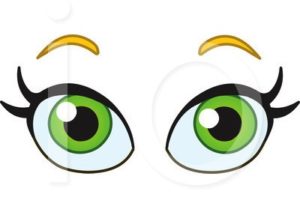
1. Eat right for sharp sight
For sharper vision, incorporate these dietary powerhouses into your daily nutritional regimen:
Antioxidants: Beta-carotene, lutein, and zeaxanthin protect the macula (a part of the eye that is near the center of the retina) from sun damage. Foods rich in these nutrients have been found to prevent age-related macular generation — a leading cause of blindness. Some of these foods include dark leafy greens, egg yolks, yellow peppers, pumpkin, sweet potatoes, and carrots. DHA (Fish Oil): DHA is a fatty acid that can be found in coldwater fish like wild salmon, krill, and cod. A high-quality mercury-free fish oil supplement will provide structural support for the eyes through strengthening cell membranes. Pure water: Water is beneficial for the entire body. Drinking an adequate amount of pure filtered water will prevent total-body dehydration, and subsequently dry eyes.
2. Your eyes need exercise
The muscles in your eyes need to be exercised. It may be your key to optimal vision. Exercising the eyes has been found to keep eye “floaters” at bay. Here are some simple exercises that can improve your vision:
Warm up the eyes: Rub your hands together to create warmth, and then put them over your eyes for 5 seconds. Repeat this process 3 times. Roll your eyes: Starting by looking at the ceiling, slowly roll your eyes 10 clockwise and 10 times counter-clockwise. Focus: Hold a pen an arm’s length away. Focus your vision on it, and then slowly bring the pen forward until it is about 6 inches away from your nose. Slowly move the pen back to its original position. Repeat this process 10 times. Massage your temples: Using the knuckles of your thumbs, gently massage your temples in small circles. Perform the motion in one direction 20 times, and then 20 times once more in the opposite direction.
3. Monitor your environment
Many environmental factors contribute to poor vision. Fluorescent lights, computer screens, environmental allergens, chlorine in swimming pools, air conditioning and heating, reading in dim lighting, and constant rubbing of the eyes all play a role in diminishing your vision. In addition, cigarette use increases optic pressure, which can result in a number of damaging consequences.
4. Resting the right way
Your eyes need rest. For every 50 minutes spent reading or sitting in front of a computer screen, give your eyes a rest for 10 minutes. Cupping your hands over your closed eyes ensuring that no light is reaching them is a great way to relax them. Be sure to get 7-8 hours of sleep per night to ensure not only rested and recovered eyes, but a rested and recovered body.
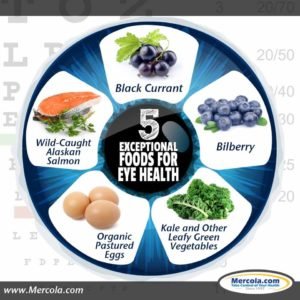
Close up of the schlera.
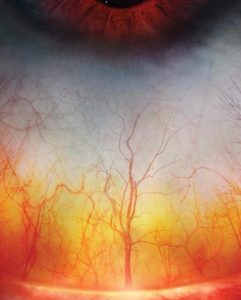
The cornea is the only tissue that doesn’t require blood vessels.


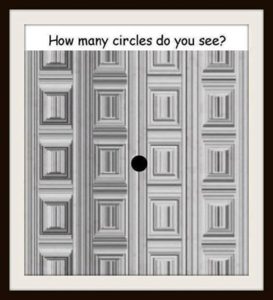
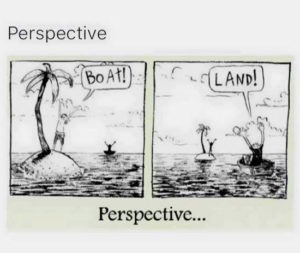
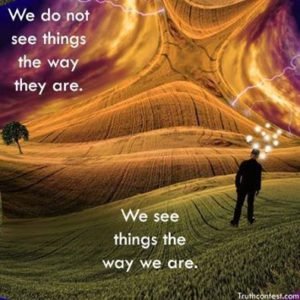
![]()
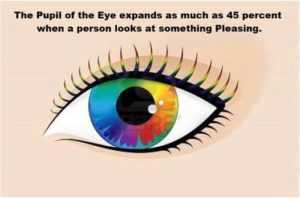
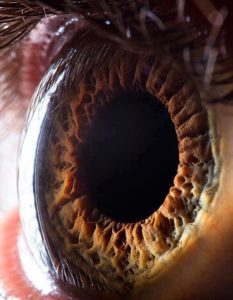
High definition close-up of the eye
Remember we have limited vision of the world. Often things are invisible to us or an illusion and what we see is not there or happening. Check out these illusions!



